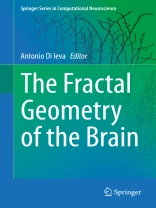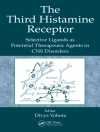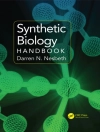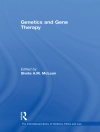Reviews the most intriguing applications of fractal analysis in neuroscience with a focus on current and future potential, limits, advantages, and disadvantages. Will bring an understanding of fractals to clinicians and researchers also if they do not have a mathematical background, and will serve as a good tool for teaching the translational applications of computational models to students and scholars of different disciplines. This comprehensive collection is organized in four parts: (1) Basics of fractal analysis; (2) Applications of fractals to the basic neurosciences; (3) Applications of fractals to the clinical neurosciences; (4) Analysis software, modeling and methodology.
विषयसूची
Part I. Introduction to Fractal Geometry and its Applications to Neurosciences.- The Fractal Geometry of the Brain: An Overview.- 2. Box-Counting Fractal Analysis: A Primer for the Clinician.- Tenets and Methods of Fractal Analysis (1/f noise).- 4. Tenets, Methods and Applications of Multifractal Analysis in Neurosciences.- Part II. Fractals in Neuroanatomy and Basic Neurosciences.- Fractals in Neuroanatomy and Basic Neurosciences: An Overview.- Morphology and Fractal-Based Classifications of Neurons and Microglia.- The Morphology of the Brain Neurons: Box-counting Method in Quantitative Analysis of 2D Image.- Neuronal Fractal Dynamics.- Does a Self-Similarity Logic Shape the Organization of the Nervous System?.- Fractality of Cranial Sutures.- The Fractal Geometry of the Human Brain: An Evolutionary Perspective.- Part III. Fractals in Clinical Neurosciences.- Fractal Analysis in Clinical Neurosciences: An Overview.- Fractal Analysis in Neurological Diseases.- Fractal Dimension Studiesof the Brain Shape in Aging and Neurodegenerative Diseases.- Fractal Analysis in Neurodegenerative Diseases.- Fractal Analysis of the Cerebrovascular System Physiopathology.- Fractal and Chaos in the Hemodynamics of Intracranial Aneurysms.- Fractal-based Analysis of Arteriovenous Malformations (AVMs).- Fractals in Neuroimaging.- Computational Fractal-Based Analysis of MR Susceptibility Weighted Imaging (SWI) in Neuro-oncology and neurotraumatology.- Texture Estimation for Abnormal Tissue Segmentation in Brain MRI.- Tumor Growth in the Brain: Complexity and Fractality.- Histological Fractal-based Classification of Brain Tumors.- Computational Fractal-based Analysis of the Brain Tumors Microvascular Networks.- Fractal analysis of electroencephalographic time-series (EEG-signals).- On Multiscaling of Parkinsonian Rest Tremor Signals and Their Classification.- Fractals and Electromyograms.- Fractal analysis in Neuro-ophthalmology.- Fractals in Affective and Anxiety Disorders.-Fractal Fluency: An Intimate Relationship Between the Brain and Processing of Fractal Stimuli.- Part IV. Computational Fractal-Based Neurosciences.- Computational Fractal-based Neurosciences: An Overview.- Image J in Computational Fractal-based Neuroscience: Pattern Extraction and Translational Research.- Fractal Analysis in MATLAB: A Tutorial for Neuroscientists.- Methodology to Increase the Computational Speed to Obtain the Fractal Dimension Using GPU Programming.- Fractal Electronics as a Generic Interface to Neurons.- Fractal Geometry meets Computational Intelligence: Future Perspectives












